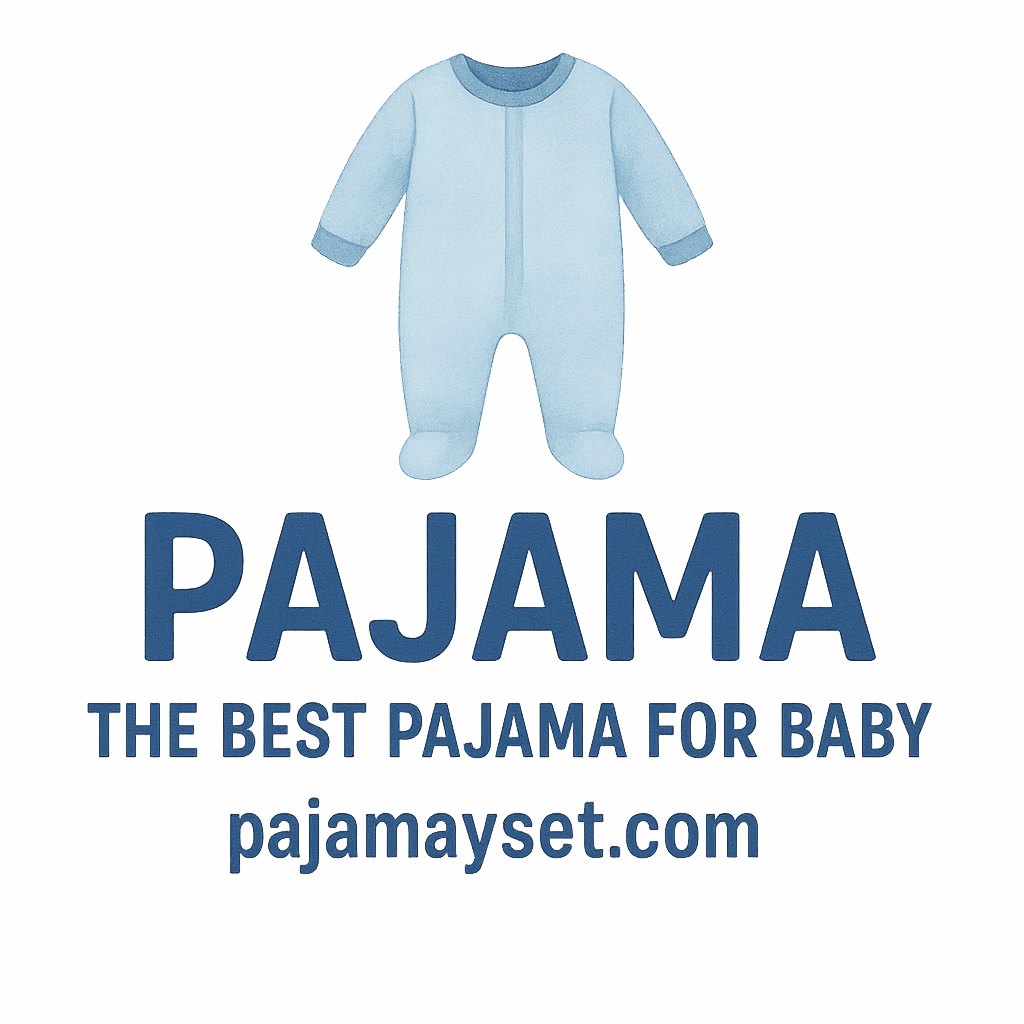Introduction
When it comes to choosing pajamas, safety is just as important as comfort. Whether you’re shopping for your child or buying a new set for yourself, pajama safety labels can provide crucial information to keep everyone comfortable and protected. In this article, we’ll dive into the 7 pajama safety labels you must understand. These labels not only ensure your pajama is safe to wear but also offer guidelines on how to maintain the safety standards over time.
For more information about pajama materials, you can explore our detailed guide on Pajama Materials.
Understanding Pajama Safety Labels
Pajama safety labels are more than just a set of instructions on the tag—they’re an essential part of ensuring comfort and protecting wearers from possible hazards. These labels inform consumers about the fabric composition, care instructions, sizing, and any potential risks associated with the garment. From babies to adults, understanding these labels is vital for making the right pajama choices.
1. Flame Resistance: A Vital Safety Label
Why Flame Resistance Is Crucial for Pajamas
Flame resistance is one of the most critical safety features in pajamas. Particularly for young children, pajamas must meet flame resistance standards to reduce the risk of catching fire. According to the U.S. Consumer Product Safety Commission (CPSC), sleepwear for children under a certain age must meet strict flame-retardant standards to help prevent burns.
Check out our post on baby safety to see how flame-resistant sleepwear can provide peace of mind for parents.
Safety Standards for Flame Resistance
The flame resistance label usually indicates whether the pajama has been treated with flame-retardant chemicals or if the fabric itself is inherently flame-resistant. The label might also indicate that the pajama meets the standards set by the CPSC or other regulatory agencies. When buying pajamas, especially for children, always check for these labels to ensure they are safe from fire hazards.
For more on how to choose the safest pajamas for your little ones, explore our buying reviews.
2. Fit and Sizing Labels: Ensuring Comfort and Safety
How Proper Fit Can Prevent Injury
A good fit is not just about comfort—it’s also about safety. Pajamas that are too tight can cause discomfort and restrict movement, while those that are too loose may pose a tripping hazard or become tangled during sleep. The fit and sizing label helps guide you to the correct size for optimal safety.
Common Sizing Issues and Their Safety Risks
Common safety risks linked to poor pajama fit include entanglement in loose fabrics and difficulty in moving freely. A good fitting pajama should not be too tight or too loose and should allow for natural movement during sleep.
For guidance on sizing and finding the right fit, check our post on comfortable pajamas.
3. Age Appropriateness Labels: Choosing Pajamas for Different Ages
How Age-Specific Labels Improve Safety
Age-appropriate labeling is crucial to ensure that pajamas are safe for different age groups. For infants, pajamas should have design features that prevent choking hazards, such as removing buttons or avoiding zippers. For older children and adults, pajamas may have different materials or designs that are not safe for babies.
For detailed insights on baby-friendly pajamas, you can refer to our guide on baby safety.
The Importance of Baby Pajama Safety Labels
For babies and toddlers, always look for safety labels indicating that the pajamas are designed for their age. These labels often address potential hazards such as choking risks, fabric choice, and fit. Baby safety pajamas may include elastic waistbands, no-buttons designs, and flame-resistant fabrics.
Check out our detailed article on safe baby pajamas for more tips.
4. Fabric Composition: Understanding Materials for Safety
Why Fabric Choice Matters for Pajama Safety
The material used in pajamas plays a significant role in safety. For example, some fabrics are more breathable than others, which is important for regulating body temperature during sleep. Organic cotton, for instance, is softer and less likely to irritate sensitive skin, making it ideal for babies and individuals with skin sensitivities.
For more about the benefits of fabric choice, visit our page on pajama materials.
Breathability, Sensitivity, and Temperature Control
Pajamas made from breathable fabrics help regulate body temperature, ensuring the wearer is not too hot or cold. Labels indicating fabric composition, such as “100% cotton” or “breathable polyester,” are important to look for, especially in climates with extreme temperatures.

5. Care and Washing Instructions: Maintaining Safety Over Time
How Proper Care Enhances Pajama Longevity and Safety
Proper care of your pajamas ensures they remain safe to wear. Following the washing and care instructions on the label can help prevent shrinking, color fading, or loss of flame resistance. The care instructions might include specific washing temperatures, drying methods, and whether the pajamas can be ironed or not.
For a comprehensive guide on washing and maintaining your pajamas, you can check out our seasons weather section.
Potential Hazards of Improper Pajama Care
Improper washing can damage the flame-resistant properties of the fabric, cause shrinkage, or lead to irritating fabric conditions. Always follow the care instructions to maintain the safety features of the pajamas.
6. Choking Hazards: Identifying Dangerous Components
Understanding the Risks of Buttons, Zippers, and Embellishments
Buttons, zippers, and other embellishments may look cute, but they can also pose serious choking hazards for babies and young children. Always check the pajama label for any warning signs regarding small parts or risky accessories.
For tips on ensuring safe pajamas for your little ones, refer to our article on baby safety.
Tips for Safe Pajamas for Infants and Toddlers
For infants and toddlers, avoid pajamas with buttons, bows, or anything that could potentially come loose and become a choking hazard. Opt for pajamas with flat seams, smooth zippers, or snap closures that won’t pose risks during sleep.
For additional recommendations on comfortable designs for babies, check our page on baby pajamas.
7. Certifications and Standards: What to Look For
Recognized Safety Certifications in Pajama Labels
Look for certifications that guarantee the safety of the pajamas. These might include the OEKO-TEX Standard 100, which ensures the fabric has been tested for harmful substances, or the Global Organic Textile Standard (GOTS) for organic materials. Certifications can give you peace of mind that the pajamas are manufactured following strict safety protocols.
For a more in-depth understanding of industry standards, check our section on expert opinions and recommendations.
The Role of Experts in Pajama Safety Regulations
Experts in textiles, child safety, and product manufacturing ensure that pajama labels comply with the latest regulations and safety standards. Certifications from trusted authorities indicate that the pajama has undergone rigorous testing and meets the required safety standards.
Conclusion
Pajama safety labels are not just a guideline but a necessity for ensuring the health and well-being of the wearer. Whether you’re shopping for your child or yourself, always take the time to understand the labels. From flame resistance to fabric choices, these labels provide vital information that ensures your pajamas are safe, comfortable, and durable.
By recognizing and prioritizing pajama safety labels, you’re making an informed decision that helps protect your loved ones while keeping them cozy and comfortable.
For additional insights on pajama shopping, make sure to explore our guide on buying reviews.
FAQs
- What is the importance of flame resistance in pajamas?
Flame resistance is crucial for reducing the risk of burns, especially in children’s sleepwear. Pajamas with this label meet specific safety standards to ensure they don’t catch fire easily. - Can pajamas be too tight or too loose?
Yes, poor fit can lead to safety risks such as discomfort or tripping. Pajamas should fit snugly but allow for natural movement during sleep. - Why is fabric composition important for pajama safety?
The fabric’s breathability, softness, and temperature control are essential for comfort and safety, especially for sensitive skin. - How can I ensure my baby’s pajamas are safe?
Look for labels indicating age appropriateness, avoiding small parts that can be a choking hazard, and ensuring the pajamas are free from harmful chemicals. - Do care instructions impact pajama safety?
Yes, improper care can damage flame resistance, shrink fabrics, and compromise comfort. Always follow the care instructions on the label. - What certifications should I look for in pajamas?
Certifications like OEKO-TEX Standard 100 and GOTS are important for ensuring the pajamas meet safety and quality standards. - How do I identify choking hazards in pajama designs?
Look for labels warning about small parts such as buttons or zippers, especially in pajamas for babies and toddlers.


